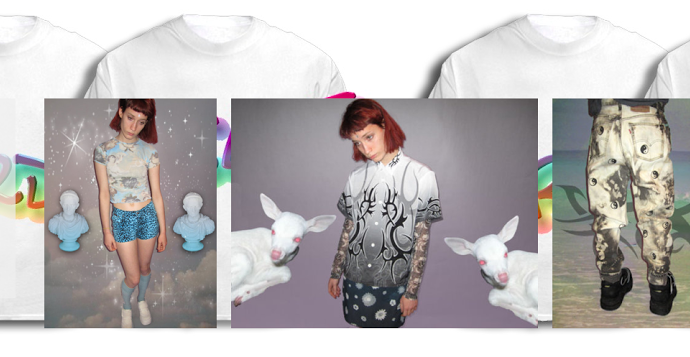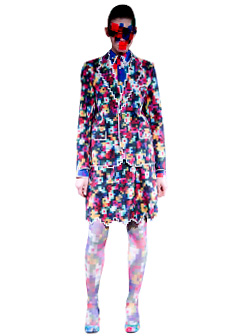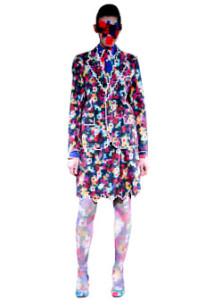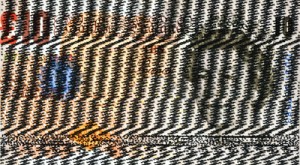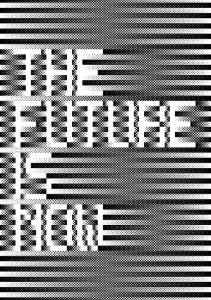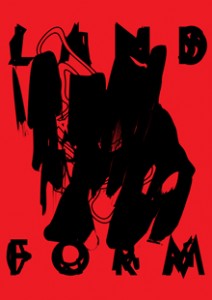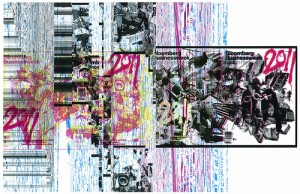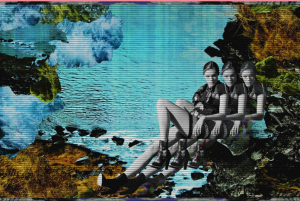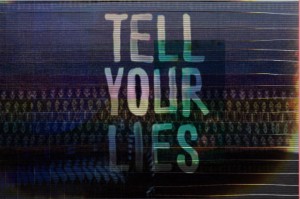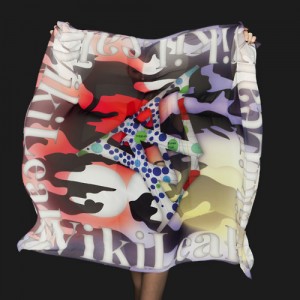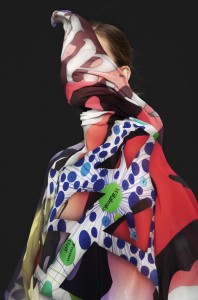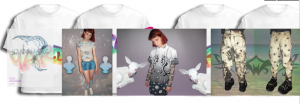 |
| Yard666Sale |
The cult renaissance in 1990s style visuals / fashion has less to do with ironic retro references and much more to do with the hyper-stimulated tumblr generation and the endlessly scrolling web page. This fresh generation of creative curators are finding inspiration in a decade that saw the end of a human paced era and the beginning of a digitally leaping one.
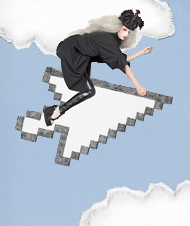 |
| Justin Solitrin |
Retro culture as we knew it is over. Our western cultural past is no longer mainly served with retro irony by those too late or too young to join the party, nor by pompous posturing by those that were there first time around.
“Technology has been moving forward faster than we are able to digest, figure out, interpret and make use of. We are perpetually trying to catch up. I think the 90’s mark the start of this or, at least, the end of what was before”
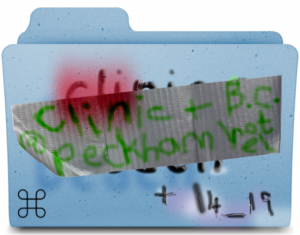 |
| Baz &Chaz, Peckham Hotel |
So says Justin Solitrin before continuing…
“Maybe it’s a grasping nostalgia trying to refer to a slightly slower time – the tombstones for a human-paced world,” he adds. “As far as I’m concerned it is not about retro at all, but more about creating something quite radical – and simple at the same time.”
In the UK, curators Baz And Chaz lead the pack with exhibitions that are ‘inspired by low-culture and the throwaway aspects of modern life’. The duo bring together international artists and illustrators within an as yet unnamed movement.
 |
| Yard666Sale |
Common Chant, is run by a curator and artist by the name of Julie Eckert. She sees no distinction between her own personal memory and a virtual cultural memory she can tap into every day on the web. It’s an outlook that is echoed throughout her generation.
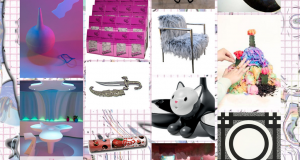 |
| The Common Chant |
“Being born in 1987, the visual aspects of the 90’s and my ideas of art and design are interwoven. Often, I experience feigned/implanted nostalgia, which is definitely informed by the amount of imagery I absorb online daily.
It seems to be a common strand throughout the net-art community. I don’t find my self deliberately trying to draw from the decade.” Julia explains.
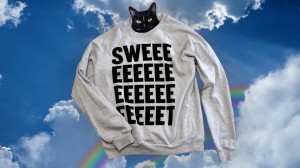 |
| Jeff & Paul |
New York based Jeff & Paul work with clients including The Art Directors Club and Google. They explain the seepage of these 90s references into the mainstream: “Nineties design, (mis)use of interface elements and references to the early web feel like very deliberate choices to evoke nostalgia for that era. The web was weird and mysterious in the beginning – playing with the visual language of the early web brings back that feeling.”
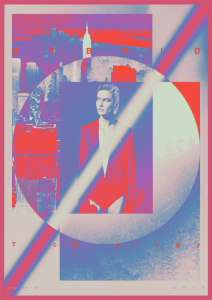 |
| Department International |
The self-styled ‘transatlantic design studio’ Department International, run by the duo ‘Brian & Bobby’, works in print and identity design and has developed an aesthetic that is rooted in Brian says: “There is definitely a naïveté to the 90’s that is very appealing to me – the idea of actively treading new ground without care if something is good or not… rejecting taste and doing something unconventional”.
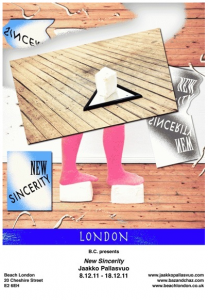 |
| Baz&Chaz |
Baz And Chaz uphold the role of aesthetics. As Baz explains; “I grew up in the 90’s. Early-internet aesthetics are important to me. I like the primitivism of it. I think there’s too much [poor quality] digital design nowadays. So to look back at early digital aesthetics – the really lo-fi, primitive stuff – is a way of highlighting that.”
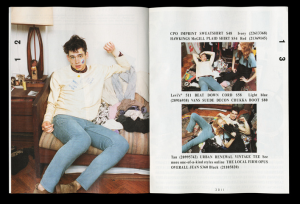 |
| Urban Outfitters, Joel Evey |
Joel Evey, Print Art Director for US retail chain Urban Outfitters coined the phrase ‘the tumblr generation’ when trying to talk at internal level about the company’s target market.
He believes that it is crucial for mainstream creative companies like his to look to avant-garde visual culture and graphics. he states “Other retailers might not think this smaller segment of the market is worth going after, but I contend that it is, because they are the ones that are starting to influence taste.”
New York-based Body by Body are the prolific artists Melissa Sachs and Cameron Soren, who have been producing T-shirts and artwork for a couple of years.
Their Lookbook created back in 2010 still seems fresh, incandescent, gleefully making use of seemingly disparate corporate logos like PayPal.
 |
| Body by Body |
“There is definitely a lot of [pre- and early Internet] aesthetics prevalent on sites like tumblr, but there are also those who play with those aesthetics outside of the Internet realm or with aesthetics from two weeks ago, which is why we don’t necessarily segregate them from each other” explains Sachs, “In a way it is more about the infinite sharing of imagery that has an overwhelming influence on our aesthetic output.”
Body by Body recently held an exhibition in March 2012 with longterm collaborators Deke2 and (Parker Ito)grandly entitled Anime Bettie Page Fucked By A Steampunk Warrior, which included a collection of video pieces that push the boundaries still further…
 |
| GreekNew Media Shit |
 |
| Sterling Crispin |
Sterling Crispin is another agitator, currently studying for an MFA in Digital Media at The University of California.
Crispin is Well known for his excellent comical stab at noting a movement underway back in April 2011, Crispin set up the site Greek New Media Shit to uncover the seemingly generic plastering of digital self referencial works. He’s also a committed artist and when asked about how he sees the world, Crispin responds…“I think its much more radical to be in the world today with sincerity and optimism, rather than irony, sarcasm and cynicism. We all share the same Internet, which levels the playing field of distribution, allowing for ancient masterpieces to be viewed along side smiley-faced alien gifs, in a constant stream of tumblr posts and status updates.”
Where is it all going? Common Chant sums it up… “The Internet is a giant echo chamber. I feel in many ways Internet culture is moving away from the stringency of trends and towards a great omnium-gatherum of ideas.”
Radical and simple at the same time, this is digital born of digital.
Tweet












